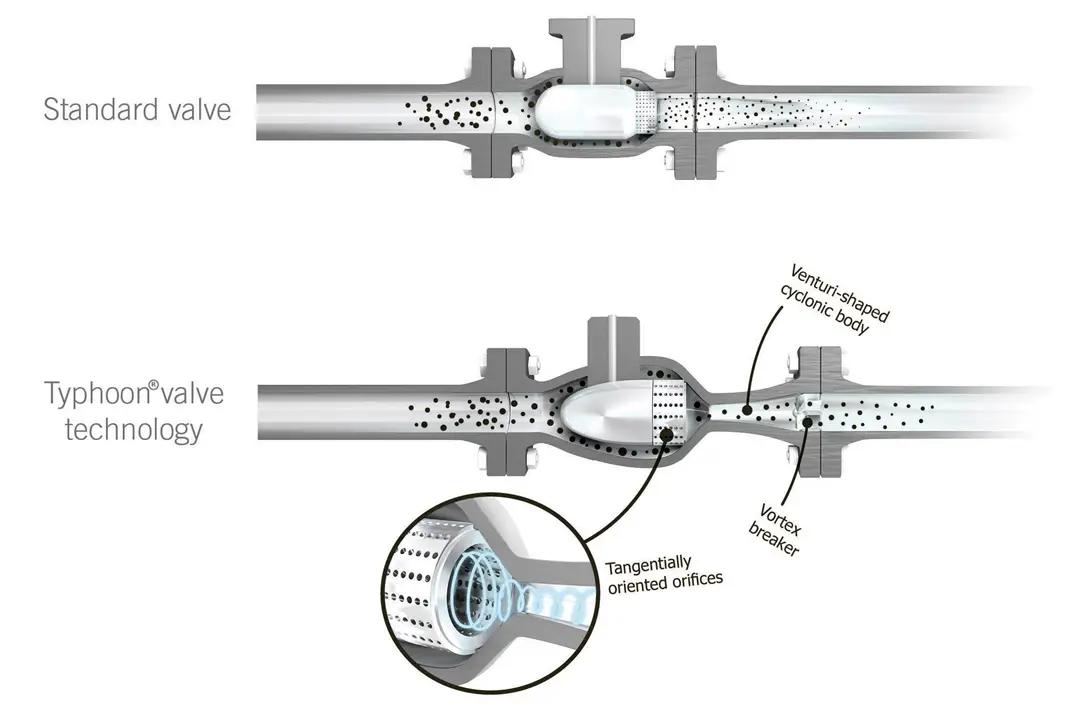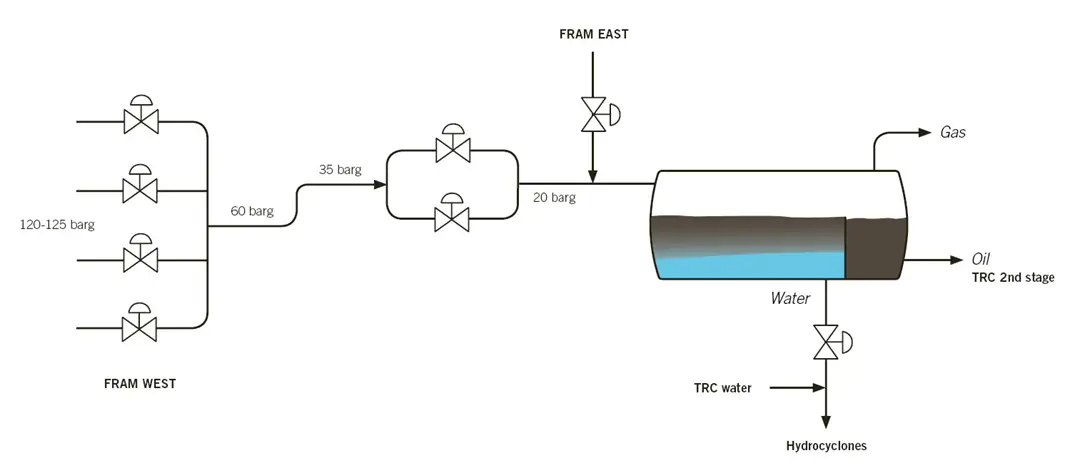Low shear choke valve offshore installation at Troll C
Learn more about low shear: Field Results and Case
Typhoon Valve System Offshore choke valve installation at Troll C
The Typhoon® Valve System is a cyclone based valve technology, developed to reduce shear forces and emulsification of oil and water during throttling. An angled Low Shear Typhoon valve was installed on Troll C in the North Sea (Fram West Tie-back) in 2016. An average 60% improvement of the water quality was observed when using the Low Shear valve, compared to that of the standard choke. Noise and vibration measurements did not show any difference between the Typhoon Valve System and the conventional choke valve.

Typhoon Valve System
The Typhoon® Valve System has, through several years of experimental investigations, proven significant improvements of downstream oil-water separability and quality. By turning the flow within the valve into a swirl, as illustrated in Figure 1, pressure reduction takes place in a larger volume compared to that of standard valves. The increased volume reduces the energy dissipation rate, and consequently enables low shear operation of the control valve, which reduces emulsions and droplet break-up.

Field setup
The Fram West field is developed by two subsea templates tied back to the Troll C platform, located in the North Sea. Fram West has two parallel topside choke valves that receive the production fluids from subsea wells, where the Typhoon Valve System replaced one of the chokes. The Fram West and Fram East production pipelines are combined downstream of the choke valves, and are processed in Fram separator as shown in Figure 2. The gas, oil and water from this separator are further treated by the Troll C process facilities.

Figure 2. – Schematic of the Fram process layout. (Click to enlarge figure)
Methodology
For the performance test of the Typhoon Valve System, the conventional choke was closed and all production flow routed through the Typhoon Valve System. After sampling and collection of test data, the Typhoon Valve System was closed and the conventional choke valve opened, and new performance data collected.
The process conditions were relatively stable during the performance test, and the fluids from the Fram field had high gas content and low water cut during the test period. The differential pressure across the chokes was approximately 15 to 20 bar. Minor slugging was observed during the test period.
Results
Separation performance

The WiO concentration measurements showed that both the conventional choke valve and the Typhoon Valve System slightly reduced the oil quality. It is worth noting that the oil upstream choke valves contained very little dispersed water. Average WiO concentration downstream both valves was still very low and within the maximum WiO specification for pipeline transport of 0.5%.
Noise and vibration

Learn more about low shear
In this section you will find some more information on different aspects of low shear. The main philosophy of low shear production is to instead of challenging the effects focus on the causes to separation problems.
Read moreFor more information contact:

